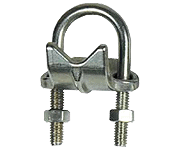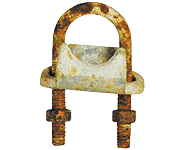Food & Beverage
Stainless Steel Conduit & Fittings For Food & Beverage Industry
- Food Processing & Packaging
- Dairy
- Breweries
- Bottling Companies
- Pet Food / Animal Feed
CDC estimates 48 million people get sick, 128,000 are hospitalized, and 3,000 die from foodborne diseases each year in the United States. Many of these cases involve the contamination of food.
In the past few years, an emphasis has been placed on food safety and the prevention of contamination. As such, there has been an increasing number of industry standards as well as government regulations put into place. Furthermore, food contamination can result in lost production batches, product recalls, fines and regulation fees; all of these can cost a company tens or even hundreds of thousands of dollars. Even worse, product recalls can be detrimental to a company’s reputation.
Consequently, cleanliness is more important than ever and stainless steel has become the material of choice in the food & beverage industry. In taking a look at the most prominent government standards and regulations as well as the environment within the industry, we can see how stainless steel is uniquely suited to meet the challenges of the food & beverage industry.
HACCP
The first concept for the Hazard Analysis and Critical Control Point (HAACP) plan dates back to the early 1960’s when NASA and Pillsbury worked on developing food for the first flight into space. It was a necessity that food for the astronauts would be free of contamination and would not cause issues during the trip; therefore, a plan was developed to ensure food quality and safety.
The HACCP evolved over the years to become a best practice in the food industry. It was adopted by the Food and Drug Administration (FDA) for certain sectors such as juice, seafood, and dairy. The United States Department of Agriculture (USDA) began to require that the meat, poultry, and egg sectors use HACCP plans as well. In addition, companies themselves began to implement similar principles.
HACCP is a seven-step guideline, developed by each facility, to help food processing and packaging operators consistently monitor possible health and hygiene risks and reduce contamination from chemical, physical, and biological hazards.
FSMA
The Food Safety Modernization Act (FSMA) was signed by President Obama in 2011 and finalized in 2016. It was the biggest reform of food safety laws in over 70 years and brought even more focus to the prevention of contamination in the food industry. The FSMA takes a proactive and preventative stance and gives the FDA authority to regulate and audit all steps of the food industry – from farmers to food packaging facilities.
With the passing of the FSMA, a new safety plan, “Hazard Analysis and Risk-based Preventative Controls (HARPC),” is now required to be implemented in food facilities. In HARPC, companies are required to establish risk-based, preventative controls and construct a plan involving the following steps:
- Hazard Analysis
- Preventative Controls
- Monitoring of Effectiveness
- Corrective Actions
- Recordkeeping
- Written Plan and Documentation
- Requirement to Reanalyze
The FDA also has the authority to conduct inspections of food facilities. It plans to increase the frequency of these inspections and mandates that “high-risk, domestic facilities must be inspected within five years of enactment and no less than every three years thereafter.”1 In addition to the increase in the frequency of inspections, the FDA will also increase the amount of data and samplings from each facility. This could involve swabbing for bacteria, photographing, etc.
Additional Regulations
In addition to HACCP and the FSMA, a project or facility may be subject to other agencies or standards. Some of those may include:
3-A Sanitary Standards (3-A SSI)
American Meat Industry (AMI)
American Society of Mechanical Engineers (ASME)
Bakery Industry Sanitation Standards Committee (BISSC)
Food Safety and Inspection Service (FSIS) of the U.S. Department of Agriculture
Occupational Health and Safety Administration (OSHA)
Pasteurized Milk Ordinance
Across all of the various regulations, the intent remains the same: to prevent contamination and ensure food safety. Controlling the cleanliness of the built environment in a food & beverage facility is critical to meet this intent. When choosing materials for food & beverage applications, it is important to keep in mind the factors discussed below.
Corrosive Agents
Wash-Down Procedures
Usually the most corrosive areas of a food & beverage facility are the wash-down regions, which themselves have gained increased attention with the FSMA. Wash-down procedures are including higher pressures and temperatures as well as greater frequency and higher chemical concentrations in order to prevent contamination. Chemical mixtures can vary across industry but all contain cleaning agents that can be very corrosive. Some of the most common agents used include:
Food and Additives
Food itself can be corrosive in nature. Many foods are acidic and therefore contain a high chloride ion concentration, which can lead to corrosion. Limes, lemons, vinegar, and apples are just a few examples of foods that have a low pH. In addition to the food itself, organic acids are often added as flavor enhancers, preservatives, acid regulators, etc. and can be corrosive in nature. Some of the most common organic acids include acetic, citric, formic, and lactic acid.
Environment and Processes
Other corrosion catalysts such as heat, moisture, evaporation, and cooling water can also be found in food & beverage plants. Temperatures in dairy production can reach as high as 130°C. In other facilities, brine cooling or steam heating processes may be used. When water is present, it may contain additional impurities and high chloride levels.
Other Factors
Exposure to Bacteria
Food particles and bacteria can become trapped in small spaces and hard to clean areas such as crevices and cracks. This can harbor the growth of bacteria and lead to contamination. A smooth and non-absorbent surface can help to prevent this entrapment.
Leaching
Leaching is defined as “dissolving out by the action of a percolating (penetrating) liquid.” When in contact with food & beverage applications, some metals and nonmetallic surfaces (e.g., rubber, plastic, paints, etc.) may leach into products, causing contamination.
Stainless Steel Solutions
Stainless steel has become the number one choice in the food & beverage industry as it combats all of the factors listed above.
The material composition of stainless steel provides superior corrosion resistance; its chromium content – greater than 10.5%, helps to form a passive oxide layer on the surface which helps minimize further corrosion. This protective film forms and re-forms in an oxygenated environment, giving stainless steel a “self-healing” property that allows stainless steel products to last 10-20 times longer than galvanized metal, carbon steel, iron, etc. in the same environment. This corrosion resistant property helps stainless steel stand up to wash-down environments, corrosive foods, and additives, as well as processing conditions and bacteria.
Note: Results after 4-week salt spray test.
In addition to its corrosion resistance as a result of its chemistry, stainless steel has other benefits. Stainless maintains its mechanical properties (e.g., strength and ductility) at both high and low temperature extremes. Furthermore, a smooth surface helps prevent bacteria and food particles from becoming trapped. Gibson Stainless products have a bright, polished finish, which further enhances the smooth surface. Finally, stainless steel is neutral and will not leach into a product, ensuring foods will not be chemically affected by coatings, paint, or the alloy itself.
Conclusion
Recent regulations and an increased emphasis on plant cleanliness have led to a need for more stringent wash-down procedures in food & beverage facilities. The corrosive nature of the chemicals and environments in wash-down areas coupled with additional corrosive agents such as food, additives, and processing agents have increased the risk for corrosion in food & beverage plants. Choosing stainless steel is necessary to combat this risk of corrosion; stainless also provides additional advantages such as mechanical strength at extreme temperatures and eliminates the possibility of leaching.
As the superior metal, stainless steel may cost more initially but may save a company various costs involved with scrapped production batches and penalty fees, as well as the headaches of regulatory issues, recalls, and plant shutdowns.
To learn more about stainless steel or to discuss your next project, contact Gibson Stainless today.
1 https://www.fda.gov/food/guidanceregulation/fsma/ucm239907.htm





